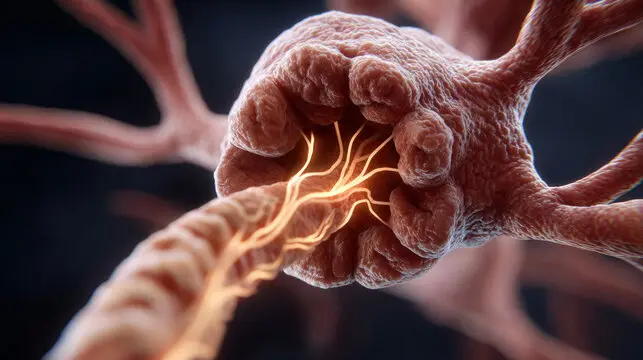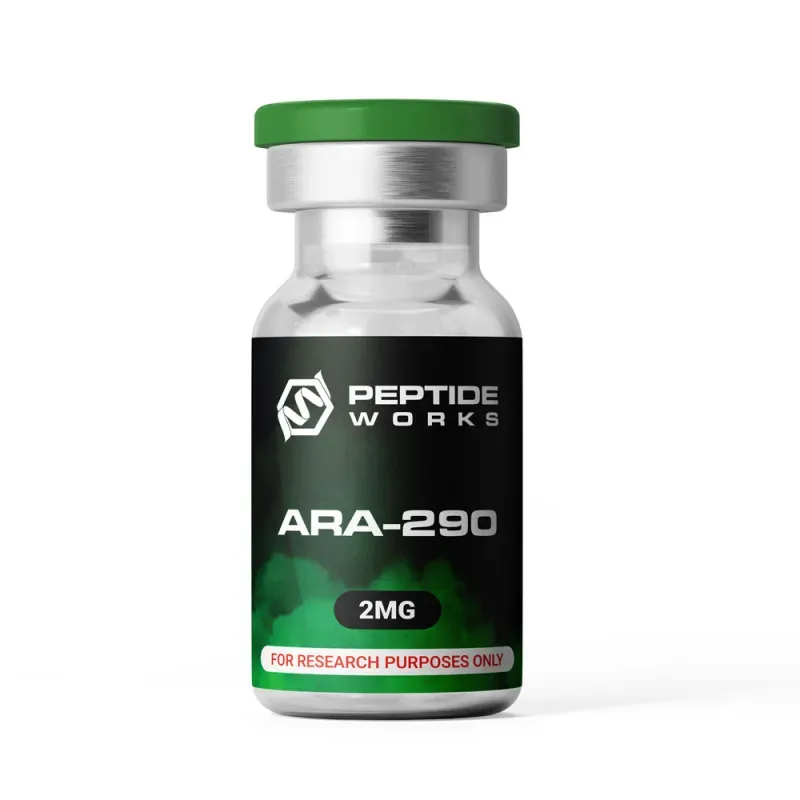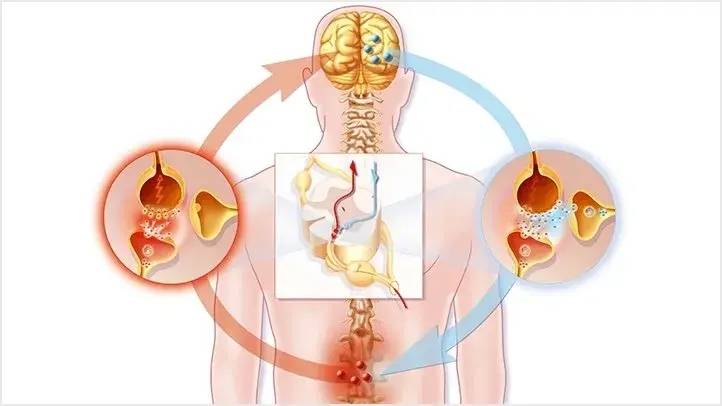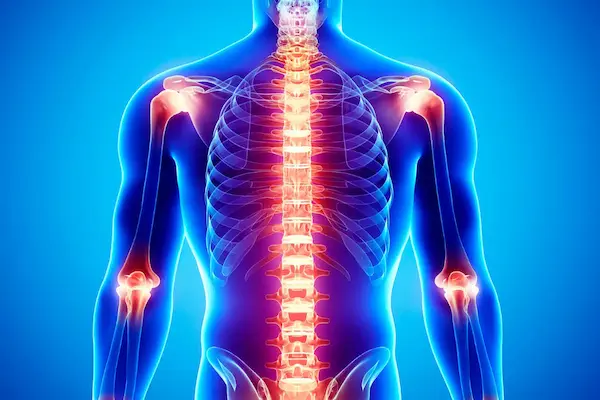
PROMO!
First order? Get 10% OFF with this code: 1storder

ARA-290 is a research peptide being developed for the treatment for chronic neuropathic pain. It has been shown in studies to give test subjects pain relief.
It does so by aiding damaged nerve fibers in healing more effectively. This peptide shields much of the nervous system from further damage.
There is some evidence it can enhance quality of life among people who have chronic pain. Clinical trials determine how well it works for pain control. Peptide Works sells these research peptides for lab use only.
Researchers investigate how it repairs nerve injury. These peptides are intended for research use only, this product is not intended for human use.
Explore ARA-290 from Peptide Works, a research peptide that may support nerve repair and reduce chronic neuropathic pain at its source.

To understand how ARA-290 provides pain relief, we need to look at its specific action on damaged nerve tissue. ARA-290 helps fix nerve injury by working on peripheral nerves that send pain signals.
This peptide blocks sodium channels that cause nerve pain to get worse. When peripheral nerve injury happens, ARA-290 stops more damage from occurring. Research shows it helps the peripheral nervous system heal faster than normal.
The peptide targets the underlying cause of nerve problems, not just the symptoms. Studies prove it works on different types of pain that come from damaged nerves. This makes it useful for many nerve conditions that affect daily life.

The nerve fiber repair process involves complex cellular mechanisms, particularly around sodium channel function.
Sodium channels cause severe pain when they stay open too long in damaged nerves. ARA-290 stops these channels from sending chronic neuropathic pain signals to the brain. When nerves get hurt, sodium channels become overactive and create pain intensity that never stops.
This peptide fixes the causes of neuropathic pain by closing these problem channels. It helps with many conditions like trigeminal neuralgia and diabetic neuropathy.
Studies show it reduces central sensitization that makes pain worse over time. The peptide targets the exact spot where pain signals start, giving better relief than other treatments.
Among the various neuropathic conditions ARA-290 addresses, trigeminal neuralgia represents one of the most challenging pain disorders. Trigeminal neuralgia creates severe pain that feels like electric shocks in the face.
This condition causes chronic neuropathic pain that can strike without warning. The nerve fibers that control facial feeling get damaged and send wrong signals to the brain.
Pain intensity can be so strong that people cannot eat, talk, or touch their face. Research shows ARA-290 helps by fixing the underlying cause of nerve damage in lab studies. Studies prove it reduces spontaneous pain episodes that happen without triggers. This makes daily activities possible again for test subjects.
The unpredictable nature of trigeminal neuralgia highlights a broader challenge in neuropathic pain management: spontaneous pain episodes.
Spontaneous pain happens without any trigger or warning in chronic neuropathic pain patients. ARA-290 research shows it can reduce these sudden pain attacks by fixing damaged peripheral nerves.
This type of pain often causes loss of sensation mixed with sharp, burning feelings. Studies prove the peptide helps prevent phantom limb pain and other sudden nerve pain episodes.
It works by stopping painful stimulus signals from reaching the brain. Research subjects show fewer surprise pain attacks after treatment. The peptide also helps with postherpetic neuralgia and other conditions that cause unexpected pain flares.
Postherpetic neuralgia, another condition causing spontaneous pain, demonstrates how viral infections can create lasting nerve damage. Postherpetic neuralgia happens when the shingles virus damages nerves and leaves them sending wrong pain signals.
This condition causes chronic neuropathic pain that can last months or years after the rash heals. The virus attacks the central nervous system and creates central sensitization that makes normal touch feel painful.
ARA-290 research shows it can help heal the nerve damage left by the virus. Studies prove it reduces pain intensity and helps restore normal nerve function. The peptide works by fixing the underlying cause of viral nerve damage, not just masking symptoms.

While ARA-290 shows promise for various neuropathic conditions, other research peptides like BPC 157 offer complementary approaches through different mechanisms.
BPC 157 works differently than ARA-290 by targeting the central nervous system directly to heal nerve pathways. This peptide helps with chronic neuropathic pain by reducing inflammation in the brain and spinal cord.
Research shows it can help with spinal cord injury recovery and brain injury healing in lab studies. BPC 157 also helps with carpal tunnel syndrome and lower back pain by fixing damaged nerve connections.
Studies prove it reduces adverse effects from nerve damage and helps restore normal function. The peptide works on the health care system level by targeting multiple pain pathways at once.
Discover BPC 157 from Peptide Works, a regenerative peptide studied for healing nerve pathways, reducing inflammation, and supporting CNS recovery.
In addition to using the peptide treatment alone, ARA-290 might also be used with conventional rehabilitation to improve overall effects. Physiotherapy improves movement and relieves pain in chronic neuropathic pain.
During treatment ARA-290 speeds up nerve repair and recovery in treatment regimens. Experiments show that ARA-290 results in superior performance only when combined with physical therapy compared to therapy alone.
Such a peptide decreases undesired sidelining effects, like muscle weakness and numbing, which would impede the progress of therapy. It also reduces side effects associated with tricyclic antidepressants. Other nerve active drugs (eg norepinephrine reuptake inhibitors) may have greater efficacy in the context of therapeutic interventions with ARA-290.
As research continues to reveal the potential of peptides like ARA-290 and BPC 157, the landscape of neuropathic pain treatment continues to evolve. Peptide research holds promise for advancing treatments of chronic neuropathic pain.
ARA-290 and BPC 157 target underlying causes instead of masking symptoms. These peptides may replace costly interventions like spinal cord stimulation in the future. Peptide Works supplies these research-grade compounds for continued study.
Future clinical practice may improve therapies for diabetic neuropathy, phantom limb pain, and other complex conditions. The diagnosis of neuropathic pain continues to benefit from these advancing peptide technologies that address root causes rather than temporary symptom management.
Thank you for reading Can ARA-290 help Chronic Neuropathic Pain? from Peptide Works a reliable peptide supplier for research purposes and laboratory use online.
References:
[1] Steingrímsdóttir ÓA, Landmark T, Macfarlane GJ, Nielsen CS. Defining chronic pain in epidemiological studies: a systematic review and meta-analysis. Pain. 2017 Nov;158(11):2092-2107.
[2] Scholz J, Finnerup NB, Attal N, Aziz Q, Baron R, Bennett MI, Benoliel R, Cohen M, Cruccu G, Davis KD, Evers S, First M, Giamberardino MA, Hansson P, Kaasa S, Korwisi B, Kosek E, Lavand’homme P, Nicholas M, Nurmikko T, Perrot S, Raja SN, Rice ASC, Rowbotham MC, Schug S, Simpson DM, Smith BH, Svensson P, Vlaeyen JWS, Wang SJ, Barke A, Rief W, Treede RD; Classification Committee of the Neuropathic Pain Special Interest Group (NeuPSIG). The IASP classification of chronic pain for ICD-11: chronic neuropathic pain. Pain. 2019 Jan;160(1):53-59.
[3] Szewczyk AK, Jamroz-Wiśniewska A, Haratym N, Rejdak K. Neuropathic pain and chronic pain as an underestimated interdisciplinary problem. Int J Occup Med Environ Health. 2022 Jun 8;35(3):249-264.
[4] Torrance N, Ferguson JA, Afolabi E, Bennett MI, Serpell MG, Dunn KM, Smith BH. Neuropathic pain in the community: more under-treated than refractory? Pain. 2013 May;154(5):690-699.
[5] Szok D, Tajti J, Nyári A, Vécsei L. Therapeutic Approaches for Peripheral and Central Neuropathic Pain. Behav Neurol. 2019 Nov 21;2019:8685954.
[6] Dworkin RH, O’Connor AB, Kent J, Mackey SC, Raja SN, Stacey BR, Levy RM, Backonja M, Baron R, Harke H, Loeser JD, Treede RD, Turk DC, Wells CD. Interventional management of neuropathic pain: NeuPSIG recommendations. Pain. 2013 Nov;154(11):2249-2261.
[7] van Hecke O, Austin SK, Khan RA, Smith BH, Torrance N. Neuropathic pain in the general population: a systematic review of epidemiological studies. Pain. 2014 Apr;155(4):654-662.
ALL CONTENT AND PRODUCT INFORMATION AVAILABLE ON THIS WEBSITE IS FOR EDUCATIONAL PURPOSES ONLY.
DISCLAIMER: These products are intended solely as a research chemical only. This classification allows for their use only for research development and laboratory studies. The information available on our Peptide Works website: https://peptide-works.com/ is provided for educational purposes only. These products are not for human or animal use or consumption in any manner. Handling of these products should be limited to suitably qualified professionals. They are not to be classified as a drug, food, cosmetic, or medicinal product and must not be mislabelled or used as such.
Peptide Works
Related Articles

Could Orexin A peptide Treat Daytime Fatigue?
Waking up tired frustrates many people. Dragging through a full day with heavy eyes and slow focus makes work and

How can the Adamax Peptide help Chronic Inflammation?
Chronic inflammation acts like a fire that never stops burning. It slows recovery, drains energy, and blocks proper tissue repair.

Can Vitamin B12 Immune System Support Enhance the Effects of Thymosin Alpha-1?
The Vitamin B12 immune system link is important because this vitamin plays a crucial role in DNA synthesis, methylation, energy